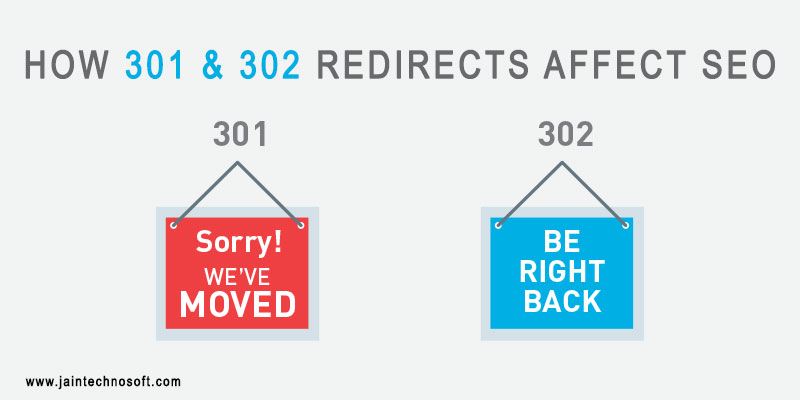
It is often seen that 301 and 302 redirects hurt the SEO strategy of your website. A deep understanding about these redirects by webmasters and SEOs will help them employ the redirect to preserve the page’s hard earned ranking and link juice.
Though the difference between the 301 and 302 redirects are quiet minor in nature, it is critical that you know what each of these redirects do and how they affect your SEO efforts and thereby the performance of your website.
First and foremost let us understand what exactly these numbers are?
301 and 302 Redirect
While 301 redirect means a page has been moved ‘permanently’ to a new location; the 302 redirect on the other hand means that the move has been ‘temporary’ in nature.
When should you use these Redirects?
A 301 status code will be used when you want to want to change the domain or launch your website on a new content management system (CMS) and the structure of your URL has changed. You can use the 301 redirect for your old content to point at the new content and thereby allow search engines to direct ranking and value signals to the new URL. This way the search engines will understand the location to be new and permanent for the content.
One of the best places to use the 302 redirect is when you have a ce-commerce setting and the product is either ‘out of stock’, ‘seasonal’ or will be sold at some time in future. In such a case the 302 code will send the user to the category page. The 302 redirect tells the search engines that the content on the page is just temporarily offline and it should keep the value/ ranking of the page intact and most importantly no transfer it to any other URL.
When does confusion arise?
Though there are not many occasions when the 302 redirect is appropriate, webmasters still resort for this redirect basically as it is easier to create than the 301 redirects. While to create 301 redirect, you require special commands in your .htaccess file in case of Apache servers, creating the 301 code is even more difficult if you are using Windows server. The 302 code on the other hand can be easily created by using JavaScript or a Meta tag. And this is where the confusion arises. Google recognizes that many use 302 code when the code to be used is 301.
If 302 redirect is used instead of 301, then search engines will continue to index the old URL and discard the new one as a duplicate. This will surely hurt the websites rankings for bringing it down for several months and sometimes even for a year!
When should you opt for a Redirect?
Unless and until you do not have a solid reason, never opt for a redirect. Some of the major reasons to take up redirect are:
- URL of your website is broken or not working
- The website needs to be redirected to a new domain
- Website’s CMS platform is changed for a new URL structure
- Website needs a design change
- Two existing websites are being merged into one
- A particular webpage or website is no more active
- A/B testing was performed on a specific web page
Advantage
If used in the right manner, the 301 and 302 redirects will save your precious SEO authority along with the current website ranking in spite of the changes made by you.
Thus it is advisable that you understand what your exact requirement and then opt for the appropriate redirect. It is also recommended that you closely monitor the performance of these redirects with the help of tools like SE Ranking in order to know the impact of the redirection on the search engines.



